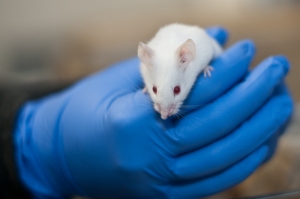I’ve been a bad blogger and have been seriously lacking in posts… 😦
I was recently sent an article in New Scientist about lab animal waste in research. I was very happy to see that other people are passionate about reducing unnecessary animal usage in research.

Simon makes a number of good points, such as enforcing the use of statistically sound numbers for justifying animal usage and designing experiments which use the minimum numbers of animals most effectively.
Other points I’d suggest:
- Penalties for labs and researchers who keep excess animals around “just in case”, only to sacrifice them when they become too old for any useful experiments. I’ve see mice over 2 years old, languishing as “breeders” in animal facilities by labs who have plainly forgotten about them. Inevitably, once someone finally notices them, these mice are euthanized – wasteful.
- Restrictions on excess breeding. Right now, a lab can get away with “justifying” ridiculously high numbers of mice on animal ethics protocols by claiming loss of animals during breeding due to cannibalism or lack of care by the mother. Why not develop better breeding protocols which nurture mothers and their young rather than having more sub-par breeders?
And finally:
- Develop a strategy for dealing with excess animals. On the flip side of bad breeding is the production of excess animals. Often this occurs when breeding transgenic animals because not all of the animals produced will carry the transgene. Usually, these “extra” animals are euthanized. I’d like to see a comprehensive strategy which would funnel these animals into a purpose – As controls in an experiment? In teaching? Pet food for snakes, etc?
Good article, and great to see an important issue addressed.
*****
Small rant: Little bothers me more about animal research than seeing animals purposely bred and then discarded. It’s the one aspect of animal research that I have never found moral justification for – How can you justify bringing a living thing into the world, only to throw it away because it does not suit your specifications?
Seems wasteful indeed. I am also glad that this is an issue that is being taken seriously in the scientific community.